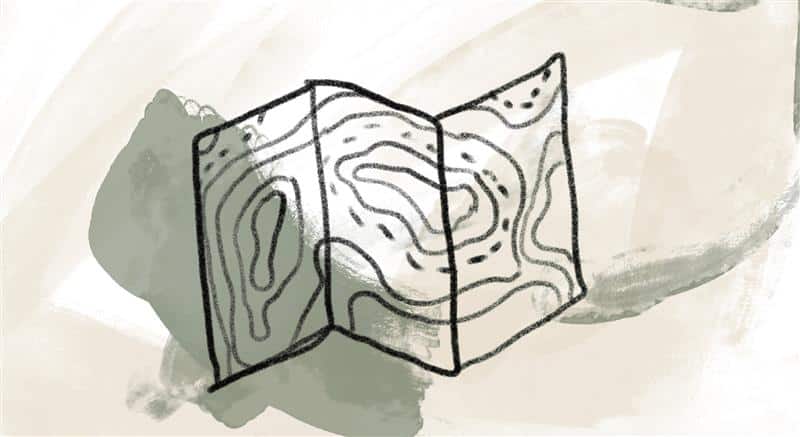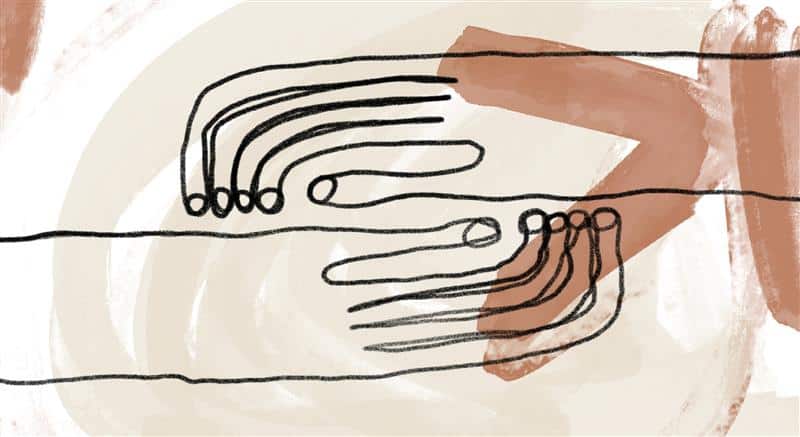
This week’s meditations focus on the shadow self, an essential concept in Richard Rohr’s work drawn from Swiss psychotherapist Carl Gustav Jung (1875–1961). Jungian analyst Ann Belford Ulanov describes it this way:
On a personal level, our shadow is all we would not be, often all our parents told us was bad behavior; it is all we would improve, all we would fix and get over, move on from.… Our enemies can tell us what our shadow is in a minute, though it is hard for us to see because, like a physical shadow, it is always behind us, adding three dimensions, depth. Most of us have dreams of being chased by a shadowy figure; that was the origin of Jung’s name for this complex. We find in our shadow complex what our ego deems negative, and usually it is. But we also may find in the shadow good parts, positive dreams, capacities for hope and creativity that we have left to languish. Sometimes it is the shadow part that saves our lives, that points the new direction. [1]
Richard counsels us to be mindful of ways religion can create the shadow within:
Persona (Greek for “stage mask”) and shadow are correlative terms. Shadow work gradually detaches us from our diligently constructed personas, often shaped in the first half of life. Our stage mask is not bad, evil, or necessarily egocentric; it is just not “true.” Our shadow is what we refuse to see about ourselves, and what we do not want others to see. The more we have cultivated and protected a chosen persona, the more shadow work we will need to do. Therefore, we need to be especially careful of clinging to any idealized role or self-image, such as minister, parent, doctor, nice person, mentor, moral believer, or president of this or that. These are huge personas to live up to; they trap many people in lifelong delusion that this role is who they are or who they are only allowed to be.
The more we are attached to and unaware of such a protected self-image, the more shadow self we will likely have. This is especially dangerous for a “spiritual leader” or “professional religious person” because it involves such an ego-inflating self-image. Whenever ministers, or any true believers, are too anti-anything, we can be pretty sure there’s some shadow material lurking somewhere nearby. Zealotry is a good revelation of one’s overly repressed shadow.
Our self-image is not substantial or lasting; it is simply created out of our own mind, desire, and choice—and everybody else’s preferences for us! It is not objective at all but entirely subjective (which does not mean that it doesn’t have real influence). The movement to second-half-of-life wisdom has much to do with necessary shadow work and the emergence of healthy self-critical thinking, which alone allows us to see beyond our own shadow and disguise and to find who we are, “hidden with Christ in God” (Colossians 3:3). [2]
References:
[1] Ann Belford Ulanov, “Where to Put the Bad? Where to Put the Feminine?,” in The Living God and Our Living Psyche: What Christians Can Learn from Carl Jung, Ann Belford Ulanov and Alvin Dueck (Grand Rapids, MI: William B. Eerdmans, 2008), 55, 56.
[2] Adapted from Richard Rohr, Falling Upward: A Spirituality for the Two Halves of Life (San Francisco, CA: Jossey-Bass, 2011), 127–128, 129–130.
Image credit: A path from one week to the next—CAC Staff, Untitled. Izzy Spitz, Untitled. CAC Staff, Untitled. Watercolor. Used with permission. Click here to enlarge image.
Even if my shadow is out of my sight, it still will make itself known.
Story from Our Community:
I have an everyday use for centering practice I would like to share. I make my living as an electrician. I often have to work in attic crawl-spaces and under houses. The problem is, I also suffer from claustrophobia. When a sudden panic rises up, I have learned how to center myself—often, by getting into “child’s pose.” I close my eyes and breathe. I surrender to the situation. In that place, on my knees with my eyes closed, I begin to feel I could be anywhere in the universe. God holds me there, in the attic or under the floor, and my panic subsides. I get a sense this may be how others have endured and continue to endure even worse experiences. —Steven E.




